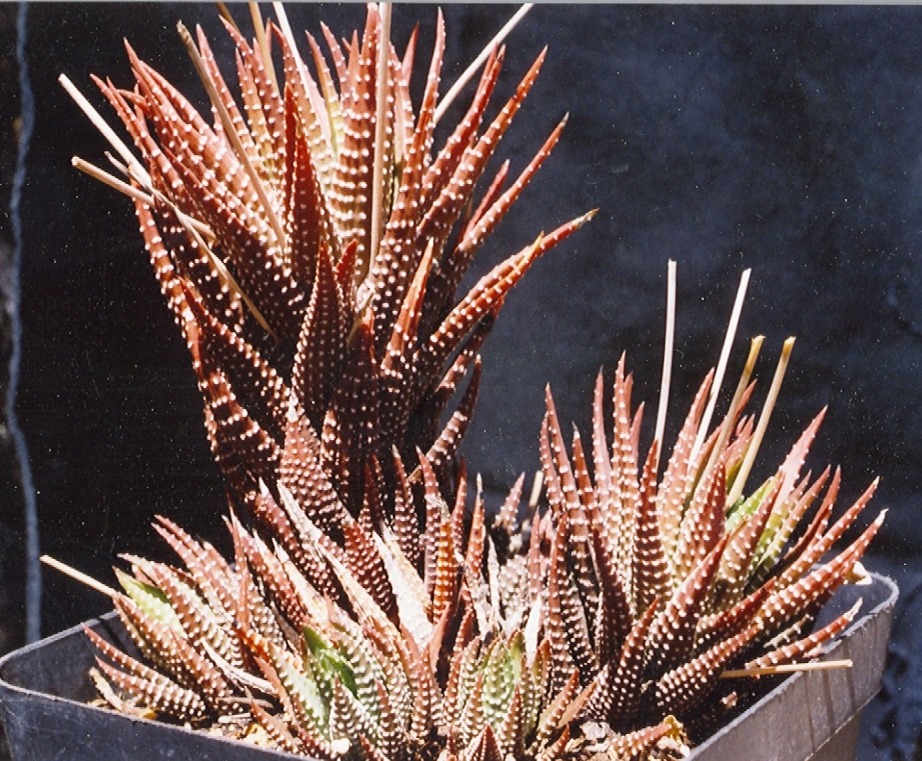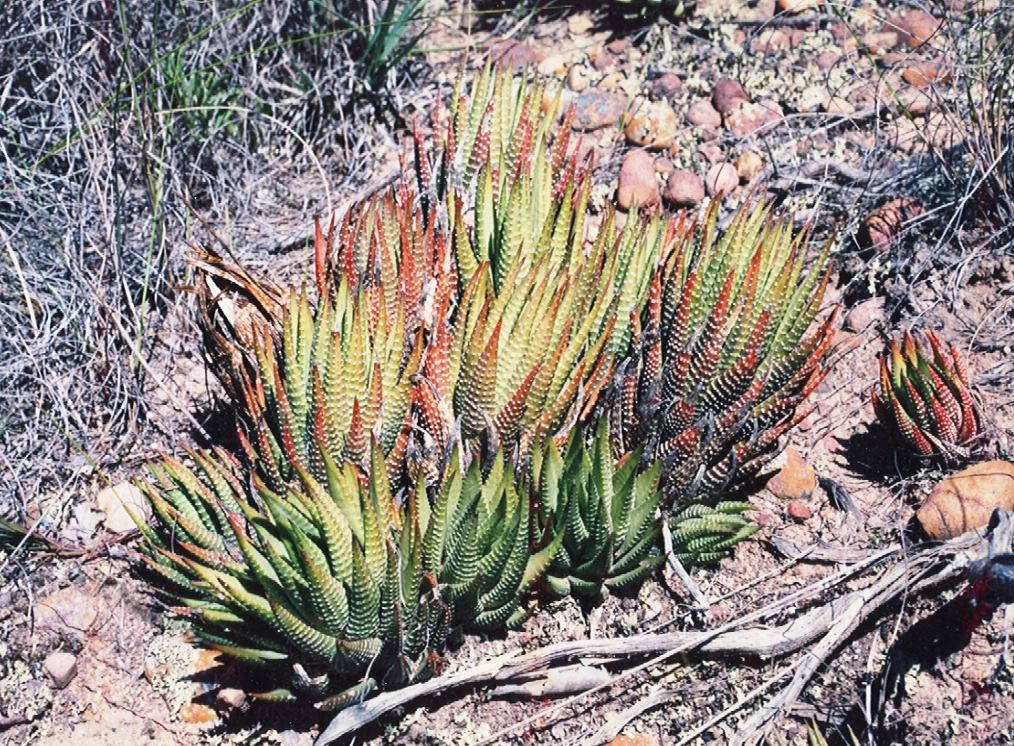95. 2019.9.19 – During the course of these posts about the retusoid complex, I received a comment about Haworthiopsis that has relevance. This was that H. tessellatata, H. granulata and H. venosa (group A) presented the same problem as the relationship of H. coarctata, H. reinwardtii and H. fasciata (group B). It simply is not true and just illustrates the misconceptions that befuddle communication and decision making. In group A, I know of no evidence whatsoever of any interaction between the three “species”. Not that this diminishes the problem. They are geographically discrete and only between H. granulata and H. tessellata is there some doubt about continuity along the border of the Roggeveld Plateaux near Middelpos. In the case of group B, it is quite different. The evidence is that H. coarctata and H. reinwardtii are confounded in the coastal area between East London and Alexandria, and that they are essentially different on the basis of polyploidy as tetraploids vs sterile triploids. This has not been clarified. Also the populations often appear to be vegetatively propagated single clones reflected in the many G.G. Smith names. Evidence was posted in this group to remind and suggest that H. coarctata is confounded with H. fasciata in the Port Elizabeth area. This is also reflected in the Von Poellnitz name H. fasciata forma variabilis. It is also evident that populations in the Lower Gamtoos (see pictures) are difficult to distinguish as either H. fasciata and H. reinwardtii (a situation touched by coastal inundation in the distant past). Furthermore there is the interaction of H. fasciata with H. glauca north east of Uuitenhage (“H. armstrongii” and “H. browniana”). Most difficult is the problem on the Zuurberg north of Kirkwood where H. glauca and H. coarctata become indistinguishable. While Haworthiopsis being such a relatively “easy” taxonomic group, there are still serious problems that explode when it comes to recognizing internal infraspecific groups such as subspecies, varieties, and forms. All this is secondary to the vexing problem of species definition. The genus Haworthia is far more complex and bewildering. It is frustrating to finally recognize that while South African Botany accepts the new generic dispensation for the Asphodelaceae, the International Organisation for Succulent (IOS) plants does not (yet).
Haworthia Updates
Thoughts and observations on the genus Haworthia


